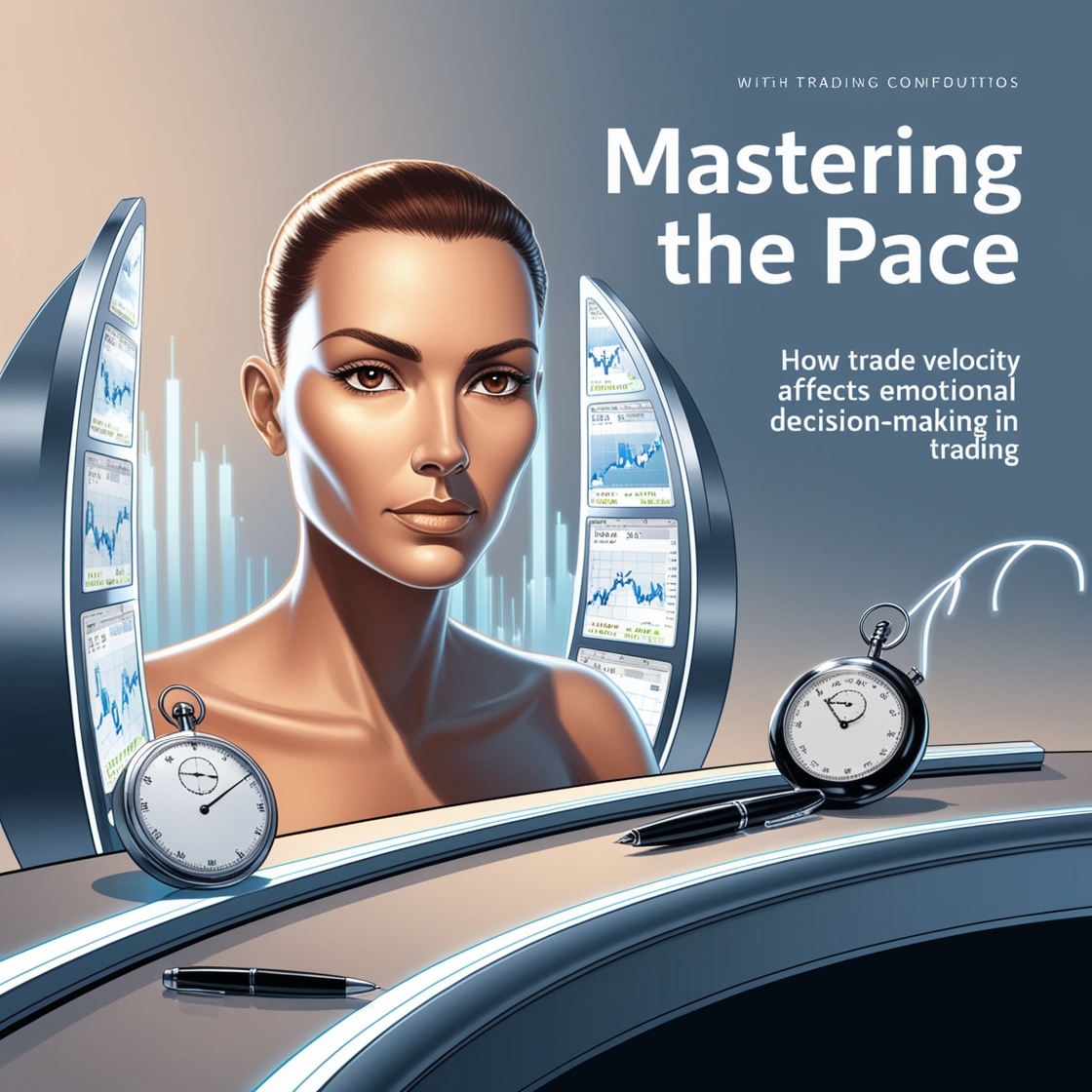Introduction
In the fast-paced world of trading, every second counts. But have you ever wondered how the speed of your trades impacts your decision-making? Trade velocity – the rate at which trades are executed – plays a significant role in determining how emotions influence trading decisions. This article explores how mastering trade pace can lead to better emotional control and more profitable outcomes.
Understanding Trade Velocity
What is Trade Velocity?
Trade velocity refers to the speed at which trades occur in the market. It can be measured as the frequency of buying and selling actions in a given timeframe.
Why is Trade Velocity Important in Trading?
High trade velocity allows traders to capitalize on fleeting opportunities, while slower trade execution provides time for careful analysis. Both approaches have pros and cons, depending on the situation.
The Psychology of Trading
How Emotions Influence Trading Decisions
Trading isn’t just about numbers and charts; it’s deeply psychological. Emotions like fear, greed, and excitement often cloud judgment, leading to impulsive actions.
The Role of Stress and Pressure in Fast-Paced Trading
High trade velocity amplifies stress. With less time to evaluate options, traders often feel pressured to make snap decisions, which can result in costly mistakes.
The Relationship Between Trade Velocity and Emotional Decisions
The Impact of Speed on Trader’s Cognitive Abilities
When trades happen too quickly, the brain struggles to process information. Instead of logical decisions, emotions take over, leading to knee-jerk reactions.
Quick Decisions vs. Rational Thinking
Rapid trading often sacrifices deep analysis for speed. Traders operating in fast-paced environments are more likely to react emotionally rather than logically.
The Role of Overconfidence in High-Velocity Trading
High trade frequency can create a false sense of control. Overconfident traders may ignore risks, leading to poor decision-making.
Why Slower Trading Allows for Better Decision-Making
The Benefits of Slowing Down
Slower trading allows traders to assess risks, evaluate market trends, and make well-thought-out decisions. It reduces the chance of emotional errors.
How a Balanced Pace Promotes Logical Thinking
A balanced pace fosters clarity. When traders slow down, they can rely on logic and data instead of impulsive instincts.
Common Emotional Biases in High-Velocity Trading
Fear of Missing Out (FOMO)
In a fast-moving market, traders often chase opportunities due to FOMO. This can lead to buying at inflated prices.
Panic Selling and Buying
Trade velocity increases panic. Sudden market drops can trigger emotional selling, while spikes encourage rushed buying.
Confirmation Bias
Traders often look for information that confirms their initial decisions. In high-velocity trading, this bias becomes even more pronounced.
The Role of Technology in Increasing Trade Velocity
Automated Trading and Its Effects
Technology has made automated trading easier and faster, but it also heightens emotional detachment. Traders may overlook risks in pursuit of speed.
The Influence of High-Frequency Trading (HFT)
HFT systems execute thousands of trades per second. While profitable for some, they amplify market volatility and emotional pressures.
Balancing Trade Velocity with Emotional Stability
Recognizing When Speed is Beneficial
Not all rapid trades are bad. In some scenarios, speed provides an edge. The key is knowing when to prioritize velocity over caution.
Techniques to Maintain Emotional Control
Mindfulness techniques, like deep breathing and self-awareness, help traders stay emotionally grounded.
Practical Steps to Manage Emotional Decision-Making
Creating a Trading Plan
A trading plan eliminates guesswork, ensuring traders stick to predefined strategies.
Setting Defined Entry and Exit Points
Clear entry and exit points reduce emotional reactions to market fluctuations.
Using Stop-Loss Strategies
Stop-loss orders protect traders from excessive losses during impulsive decision-making.
The Importance of Self-Awareness in Trading
Monitoring Your Emotions in Real Time
Traders must identify emotional triggers and adjust behaviors accordingly.
How to Stay Disciplined Under Pressure
Discipline is key. Traders who stick to their strategies, even under pressure, avoid costly mistakes.
Case Studies: Traders Affected by Trade Velocity
Success Stories from Balanced Traders
Some traders thrive by maintaining a balanced pace, using patience to their advantage.
Lessons Learned from High-Velocity Failures
High trade velocity has also led to significant losses for traders who let emotions dictate their decisions.
The Role of Education and Training in Controlling Emotions
How Learning Reduces Emotional Bias
Education equips traders with skills to handle emotional challenges effectively.
Training Programs for Traders
Programs focused on emotional control and technical analysis can drastically improve decision-making.
Tips for Mastering Trade Pace for Beginners
Understanding Market Dynamics
Beginners should start by learning how markets work to avoid emotional pitfalls.
Focusing on Long-Term Goals
Long-term strategies help traders remain patient and avoid impulsive trades.
Conclusion
Trade velocity significantly affects emotional decision-making in trading. While high-speed trading can open opportunities, it often amplifies emotional biases like FOMO, panic, and overconfidence. Slower, balanced trading allows for logical, data-driven decisions, reducing costly errors. By understanding trade pace and learning to manage emotions, traders can navigate the market successfully and improve their outcomes.
FAQs
1. What is trade velocity in trading?
Trade velocity refers to the speed and frequency at which trades are executed in a specific timeframe.
2. How does trade velocity impact emotional decision-making?
Faster trades often increase stress and emotional reactions, leading to impulsive decisions.
3. What emotional biases are common in high-velocity trading?
Common biases include FOMO, panic selling, and confirmation bias.
4. Can slower trading improve results?
Yes, slower trading allows for rational decision-making and reduces emotional errors.
5. How can traders balance speed and emotional control?
By creating a trading plan, setting stop-loss strategies, and maintaining self-discipline.
